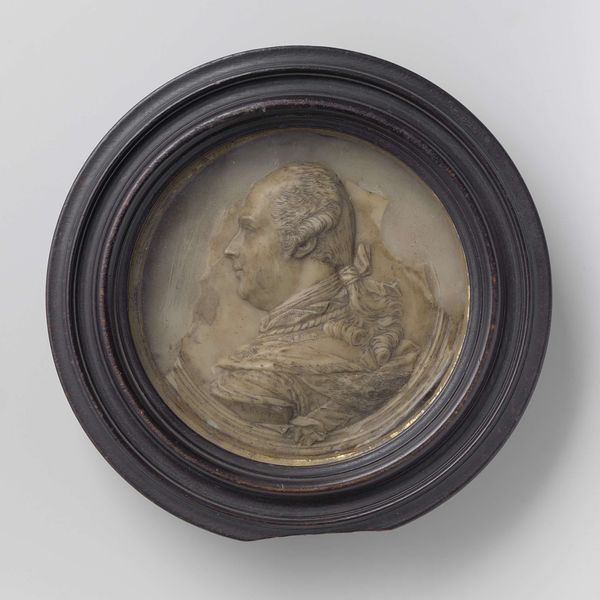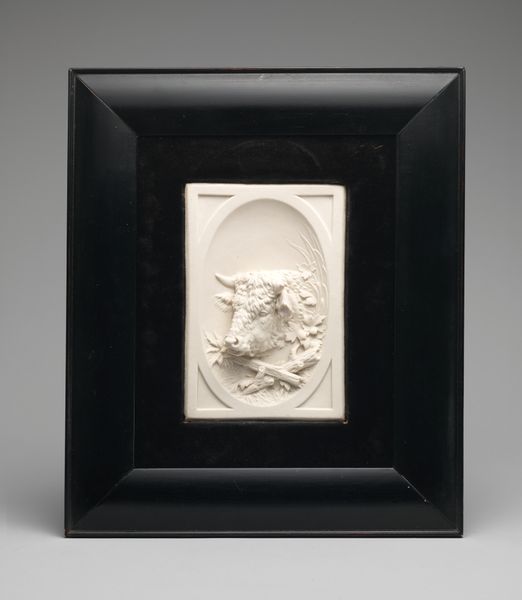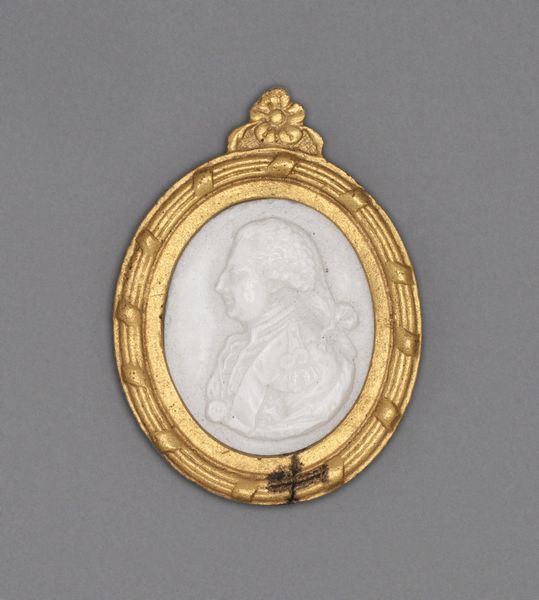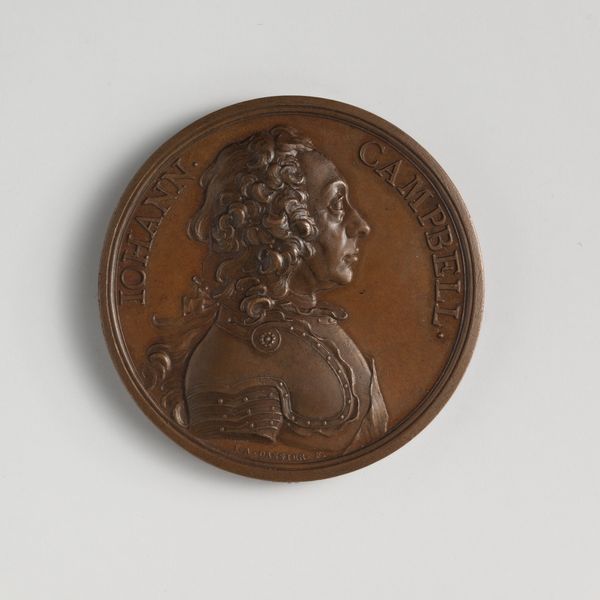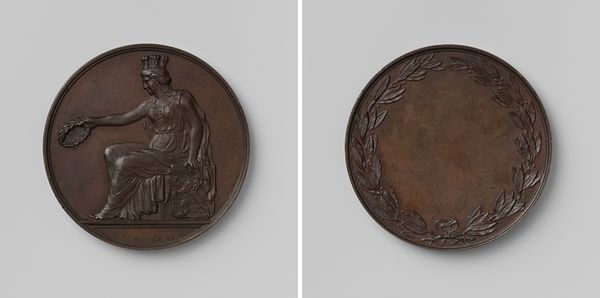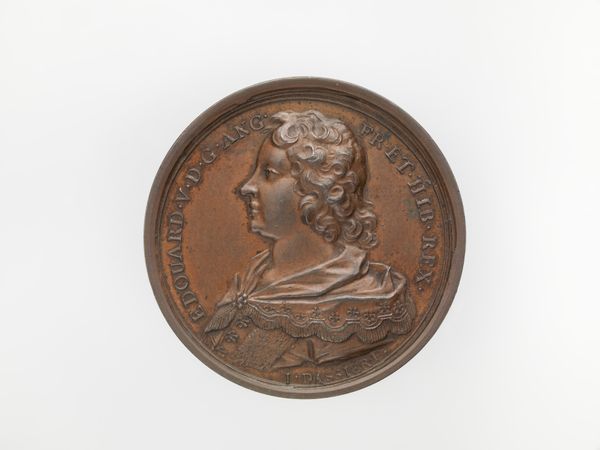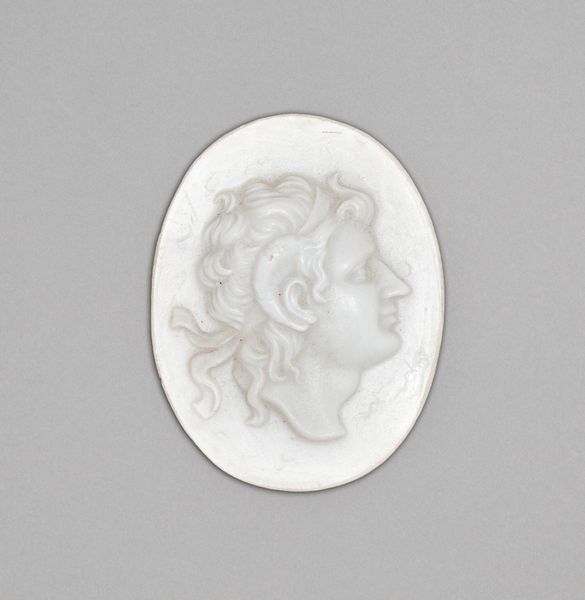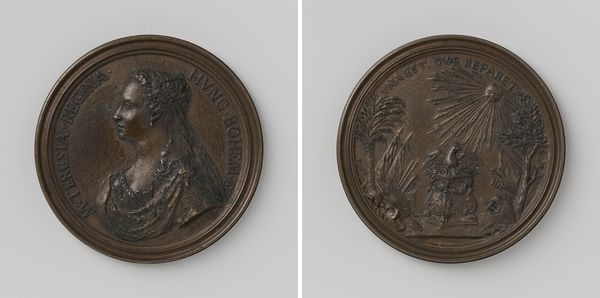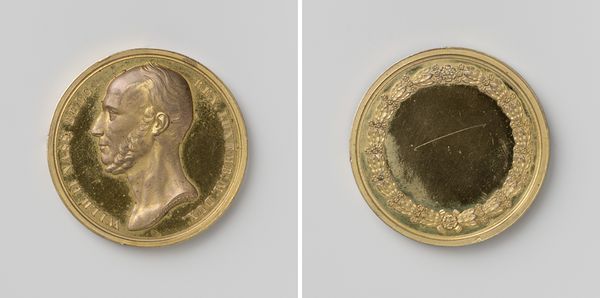
relief, bronze, sculpture
#
portrait
#
relief
#
classical-realism
#
bronze
#
framed image
#
sculpture
Dimensions: width 11 cm, height 12.5 cm
Copyright: Rijks Museum: Open Domain
Editor: Here we have Adolphe Jouvenel's bronze relief of P. Paul Rubens, crafted between 1846 and 1867. I'm immediately struck by how this small-scale object attempts to immortalize a historical figure, bridging a considerable time gap. What can you tell me about it? Curator: This piece exemplifies how the means of production shaped artistic expression in the 19th century. Jouvenel used bronze, a material historically associated with power and permanence, to create this relief. We must consider the labor involved in extracting, processing, and casting bronze. It’s a material linked to industrial and economic systems of that time. How does framing impact how we read this piece? Editor: The dark wooden frame around it definitely enhances its gravitas, almost making it appear like a precious historical document or specimen. Curator: Exactly. Framing, not just as an aesthetic choice, but as a material construction, reinforces the idea of "art" versus "craft." In a world grappling with industrialization, these distinctions reinforced class and artistic hierarchy. The act of framing separates and elevates it, suggesting that it’s special labor to be appreciated aesthetically. What happens to the labor of a bronze worker then? Editor: I hadn’t considered how the act of framing contributes to that hierarchy and erases labor! I was simply focused on the subject and material. It's a bit unsettling to realize the social layers embedded in this small object. Thanks for highlighting the framework as an act that separates and therefore has influence! Curator: Precisely. Understanding the material reality – bronze, frame, labor – is key to unraveling the narrative this piece constructs, not only about Rubens but about art and society itself.
Comments
No comments
Be the first to comment and join the conversation on the ultimate creative platform.
